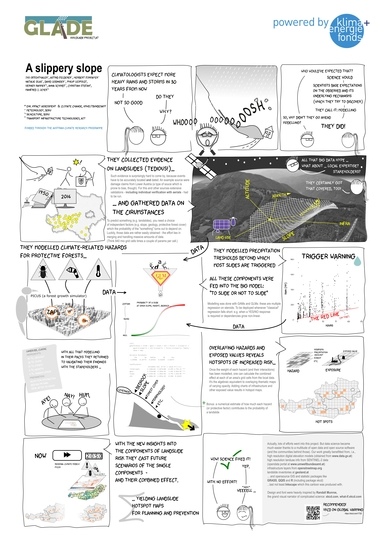Threshold or Limit? Precipitation Dependency of Austrian Landslides, an Ongoing Challenge for Hazard Mapping under Climate Change
Abstract
1. Introduction
1.1. Problem Space
1.2. Rationale
2. Materials and Methods
2.1. Analytical Framework
2.1.1. Theoretical
2.1.2. Conceptual
2.2. Data Sources
2.3. Preprocessing
2.4. Modelling
2.5. Threshold Functions
2.6. Software
2.7. Uncertainty
2.7.1. Location and Date
2.7.2. Observation Bias
3. Results and Discussion
3.1. Characteristic Slide Conditions and Probable Observation Bias
3.2. Feasibility of ID-Threshold for Local Slide Prediction
- The longer and richer (by V) a rain event, the higher the probability that it will be followed by a slide;
- Standard and critical rains do not differ in their characteristic VD-combinations, but critical rains exceed both standard D and V;
- An extraordinarily long-lasting rain period (high D) is more distinctive for critical rainfall than an unusually large precipitation volume;
- Slide probability increases faster with duration than with volume of the preceding rain;
- Standard rains hardly exceed a duration of 0.75 (local probability) and a volume of 0.25.
3.3. Hazard Modelling and Mapping
4. Conclusions
Author Contributions
Funding
Acknowledgments
Conflicts of Interest
References
- Gariano, S.L.; Guzzetti, F. Landslides in a changing climate. Earth-Sci. Rev. 2016, 162, 227–252. [Google Scholar] [CrossRef]
- Allan, R.P.; Soden, B.J. Atmospheric Warming and the Amplification of Precipitation Extremes. Science 2008, 321, 1481–1484. [Google Scholar] [CrossRef]
- Crozier, M.J. Deciphering the effect of climate change on landslide activity: A review. Geomorphology 2010, 124, 260–267. [Google Scholar] [CrossRef]
- Min, S.-K.; Zhang, X.; Zwiers, F.W.; Hegerl, G.C. Human contribution to more-intense precipitation extremes. Nature 2011, 470, 378–381. [Google Scholar] [CrossRef]
- Trenberth, K.E. Changes in precipitation with climate change. Clim. Res. 2011, 47, 123–138. [Google Scholar] [CrossRef]
- Reichstein, M.; Bahn, M.; Ciais, P.; Frank, D.; Mahecha, M.D.; Seneviratne, S.I.; Zscheischler, J.; Beer, C.; Buchmann, N.; Frank, D.C.; et al. Climate extremes and the carbon cycle. Nature 2013, 500, 287–295. [Google Scholar] [CrossRef]
- Kendon, E.J.; Roberts, N.M.; Fowler, H.J.; Roberts, M.J.; Chan, S.C.; Senior, C.A. Heavier summer downpours with climate change revealed by weather forecast resolution model. Nat. Clim. Chang. 2014, 4, 570–576. [Google Scholar] [CrossRef]
- Paranunzio, R.; Laio, F.; Nigrelli, G.; Chiarle, M. A method to reveal climatic variables triggering slope failures at high elevation. Nat. Hazards 2015, 76, 1039–1061. [Google Scholar] [CrossRef]
- Westra, S.; Fowler, H.; Evans, J.; Alexander, L.; Berg, P.; Johnson, F.; Kendon, E.; Lenderink, G.; Roberts, N. Future changes to the intensity and frequency of short-duration extreme rainfall. Rev. Geophys. 2014, 52, 522–555. [Google Scholar] [CrossRef]
- Fischer, E.M.; Knutti, R. Anthropogenic contribution to global occurrence of heavy-precipitation and high-temperature extremes. Nat. Clim. Chang. 2015, 5, 560–564. [Google Scholar] [CrossRef]
- Formayer, H.; Fritz, A. Temperature dependency of hourly precipitation intensities—Surface versus cloud layer temperature: Precipitation Intensities: Surface Versus Cloud Layer Temperature. Int. J. Climatol. 2017, 37, 1–10. [Google Scholar] [CrossRef]
- Kellermann, P.; Bubeck, P.; Kundela, G.; Dosio, A.; Thieken, A. Frequency Analysis of Critical Meteorological Conditions in a Changing Climate—Assessing Future Implications for Railway Transportation in Austria. Climate 2016, 4, 25. [Google Scholar] [CrossRef]
- Stoffel, M.; Tiranti, D.; Huggel, C. Climate change impacts on mass movements—Case studies from the European Alps. Sci. Total Environ. 2014, 493, 1255–1266. [Google Scholar] [CrossRef]
- Field, C.B.; Barros, V.R.; Mastrandrea, M.D.; Mach, K.J.; Abdrabo, M.-K.; Adger, N.; Anokhin, Y.A.; Anisimov, O.A.; Arent, D.J.; Barnett, J.; et al. Summary for policymakers. In Climate Change 2014: Impacts, Adaptation, and Vulnerability. Part a: Global and Sectoral Aspects. Contribution of Working Group II to the Fifth Assessment Report of the Intergovernmental Panel on Climate Change; Cambridge University Press: Cambridge, UK, 2014; pp. 1–32. [Google Scholar]
- Brooks, N. Vulnerability, risk and adaptation: A conceptual framework. Tyndall Cent. Clim. Chang. Res. Work. Pap. 2003, 38, 1–16. [Google Scholar]
- Luptáčik, M.; Nežinský, E. Measuring income inequalities beyond the Gini coefficient. Cent. Eur. J. Oper. Res. 2020, 28, 561–578. [Google Scholar] [CrossRef]
- Hlatky, T. HORA—An Austrian platform for natural hazards. In Proceedings of the EGU General Assembly Conference Abstracts. 2009, p. 8453. Available online: https://ui.adsabs.harvard.edu/abs/2009EGUGA..11.8453H/abstract (accessed on 15 June 2020).
- Rudolf-Miklau, F. Principles of hazard assessment and mapping. Wildbach Lawinenverbau Z. Wildbach Lawinen Eros. Steinschlagschutz 2011, 166, 20–29. [Google Scholar]
- Wöhrer-Alge, M. Landslide Management in Austria with Particular Attention to Hazard Mapping and Land Use Planning. In Landslide Science and Practice; Margottini, C., Canuti, P., Sassa, K., Eds.; Springer: Berlin/Heidelberg, Germany, 2013; pp. 231–237. ISBN 978-3-642-31312-7. [Google Scholar]
- Holub, M.; Fuchs, S. Mitigating mountain hazards in Austria—Legislation, risk transfer, and awareness building. Nat. Hazards Earth Syst. Sci. 2009, 9, 523–537. [Google Scholar] [CrossRef]
- Schinko, T.; Mechler, R.; Leitner, M.; Hochrainer-Stigler, S. Iterative Climate Risk Management as Early Adaptation in Austria–Policy Case Study: Public Adaptation at the Federal & Provincial Level; PACINAS Working Paper# 03. 2017. Available online: http://anpassung.ccca.at/pacinas/wp-content/uploads/sites/3/2017/06/PACINAS_Working_Paper-03_final.pdf (accessed on 15 June 2020).
- Stark, C.P.; Hovius, N. The characterization of landslide size distributions. Geophys. Res. Lett. 2001, 28, 1091–1094. [Google Scholar] [CrossRef]
- van Westen, C.J.; Castellanos, E.; Kuriakose, S.L. Spatial data for landslide susceptibility, hazard, and vulnerability assessment: An overview. Eng. Geol. 2008, 102, 112–131. [Google Scholar] [CrossRef]
- Field, C.B.; Barros, V.; Stocker, T.F.; Dahe, Q. Managing the Risks of Extreme Events and Disasters to Advance Climate Change Adaption: Special Report of the Intergovernmental Panel on Climate Change; Intergovernmental Panel on Climate Change, Field, C.B., Eds.; Cambridge University Press: New York, NY, USA, 2012; ISBN 978-1-107-02506-6. [Google Scholar]
- Guzzetti, F.; Peruccacci, S.; Rossi, M.; Stark, C.P. Rainfall thresholds for the initiation of landslides in central and southern Europe. Meteorol. Atmos. Phys. 2007, 98, 239–267. [Google Scholar] [CrossRef]
- Guzzetti, F.; Peruccacci, S.; Rossi, M.; Stark, C.P. The rainfall intensity–duration control of shallow landslides and debris flows: An update. Landslides 2008, 5, 3–17. [Google Scholar] [CrossRef]
- Caine, N. The Rainfall Intensity—Duration Control of Shallow Landslides and Debris Flows. Geogr. Ann. Ser. Phys. Geogr. 1980, 62, 23–27. [Google Scholar] [CrossRef]
- Nadim, F. Landslide Hazard and Risk Assessment; Words into Action Guidelines: National Disaster Risk Assessment. UNISDR. 2017, p. 10. Available online: https://www.preventionweb.net/files/52828_03landslidehazardandriskassessment.pdf (accessed on 15 June 2020).
- Preti, F. Forest protection and protection forest: Tree root degradation over hydrological shallow landslides triggering. Ecol. Eng. 2013, 61, 633–645. [Google Scholar] [CrossRef]
- Dolidon, N.; Hofer, T.; Jansky, L.; Sidle, R. ‘Watershed and Forest Management for Landslide Risk Reduction’, in Landslides—Disaster Risk Reduction; Sassa, K., Canuti, P., Eds.; Springer: Berlin/Heidelberg, Germany, 2009; pp. 633–649. [Google Scholar]
- Rickli, C.; Bebi, P.; Graf, F.; Moos, C. Shallow Landslides: Retrospective Analysis of the Protective Effects of Forest and Conclusions for Prediction. In Recent Advances in Geotechnical Research; Wu, W., Ed.; Springer Series in Geomechanics and Geoengineering; Springer International Publishing: Cham, Switzerland, 2019; pp. 175–185. ISBN 978-3-319-89670-0. [Google Scholar]
- Dale, V.H.; Joyce, L.A.; Mcnulty, S.; Neilson, R.P.; Ayres, M.P.; Flannigan, M.D.; Hanson, P.J.; Irland, L.C.; Lugo, A.E.; Peterson, C.J.; et al. Climate Change and Forest Disturbances. BioScience 2001, 51, 723. [Google Scholar] [CrossRef]
- Uzielli, M.; Nadim, F.; Lacasse, S.; Kaynia, A.M. A conceptual framework for quantitative estimation of physical vulnerability to landslides. Eng. Geol. 2008, 102, 251–256. [Google Scholar] [CrossRef]
- Amatruda, G.; Bonnard, C.; Castelli, M.; Forlati, F.; Giacomelli, L.; Morelli, M.; Paro, L.; Piana, F.; Pirulli, M.; Polino, R.; et al. A key approach: The IMIRILAND project method. In Identification and Mitigation of Large Landslide Risks in Europe; CRC Press: Boca Raton, FL, USA, 2004; pp. 31–62. [Google Scholar]
- Hiebl, J.; Frei, C. Daily precipitation grids for Austria since 1961—Development and evaluation of a spatial dataset for hydroclimatic monitoring and modelling. Theor. Appl. Climatol. 2018, 132, 327–345. [Google Scholar] [CrossRef]
- Schweigl, J.; Hervás, J. Landslide Mapping in Austria. JRC Sci. Tech. Rep. 2009. Available online: https://core.ac.uk/download/pdf/38617857.pdf (accessed on 15 June 2020).
- Petschko, H.; Brenning, A.; Bell, R.; Goetz, J.; Glade, T. Assessing the quality of landslide susceptibility maps —Case study Lower Austria. Nat. Hazards Earth Syst. Sci. 2014, 14, 95–118. [Google Scholar] [CrossRef]
- Jasiewicz, J.; Stepinski, T.F. Geomorphons—A pattern recognition approach to classification and mapping of landforms. Geomorphology 2013, 182, 147–156. [Google Scholar] [CrossRef]
- Chen, W.; Xie, X.; Wang, J.; Pradhan, B.; Hong, H.; Bui, D.T.; Duan, Z.; Ma, J. A comparative study of logistic model tree, random forest, and classification and regression tree models for spatial prediction of landslide susceptibility. CATENA 2017, 151, 147–160. [Google Scholar] [CrossRef]
- Moser, M.; Hohensinn, F. Geotechnical aspects of soil slips in Alpine regions. Eng. Geol. 1983, 19, 185–211. [Google Scholar] [CrossRef]
- Crosta, G. Regionalization of rainfall thresholds: An aid to landslide hazard evaluation. Environ. Geol. 1998, 35, 131–145. [Google Scholar] [CrossRef]
- Ponziani, F.; Berni, N.; Stelluti, M.; Zauri, R.; Pandolfo, C.; Brocca, L.; Moramarco, T.; Salciarini, D.; Tamagnini, C. Landwarn: An Operative Early Warning System for Landslides Forecasting Based on Rainfall Thresholds and Soil Moisture. In Landslide Science and Practice; Margottini, C., Canuti, P., Sassa, K., Eds.; Springer: Berlin/Heidelberg, Germany, 2013; pp. 627–634. ISBN 978-3-642-31444-5. [Google Scholar]
- Poltnig, W.; Baek, R.; Berg, W.; KERŠMANC, T. Runout-modelling of shallow landslides in Carinthia (Austria). Austrian J. Earth Sci. 2016, 109. [Google Scholar] [CrossRef]
- Nachappa, T.G.; Kienberger, S.; Meena, S.R.; Ho, D. Comparison and validation of per-pixel and object-based approaches for landslide susceptibility mapping. Geomat. Nat. Hazards Risk 2020, 11, 572–600. [Google Scholar]
- Lacroix, P.; Bièvre, G.; Pathier, E.; Kniess, U.; Jongmans, D. Use of Sentinel-2 images for the detection of precursory motions before landslide failures. Remote Sens. Environ. 2018. [Google Scholar] [CrossRef]
- Hölbling, D.; Eisank, C.; Albrecht, F.; Vecchiotti, F.; Friedl, B.; Weinke, E.; Kociu, A. Comparing Manual and Semi-Automated Landslide Mapping Based on Optical Satellite Images from Different Sensors. Geosciences 2017, 7, 37. [Google Scholar] [CrossRef]
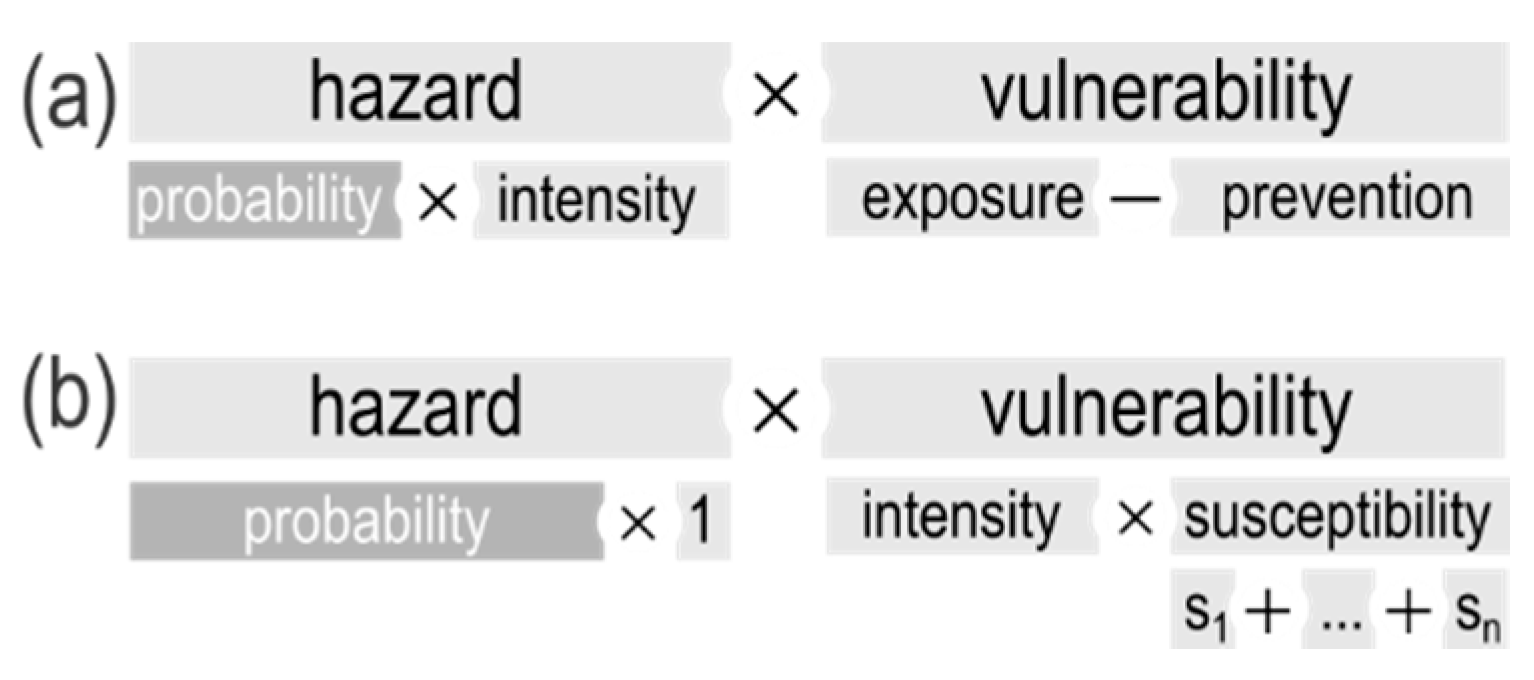

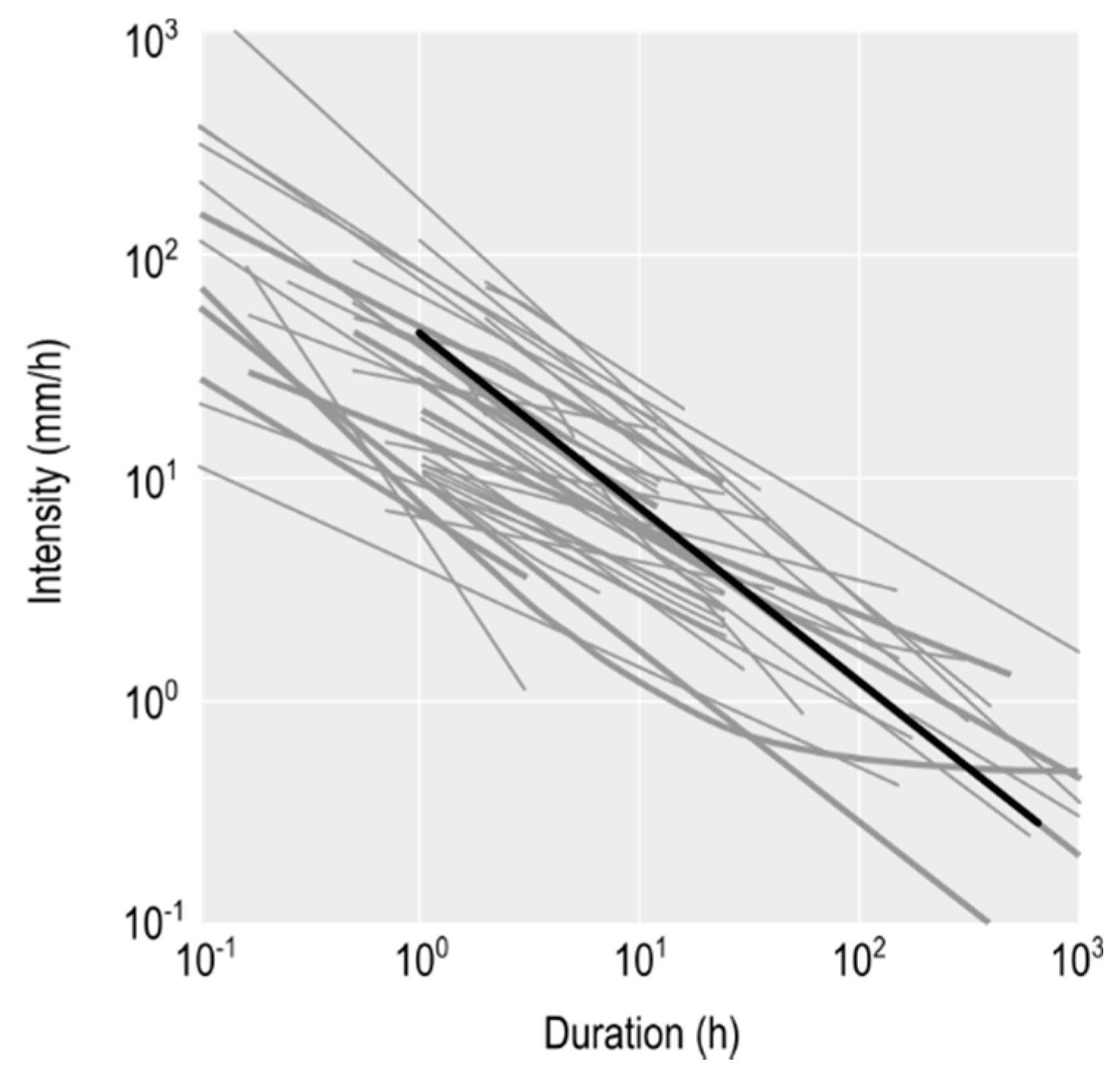

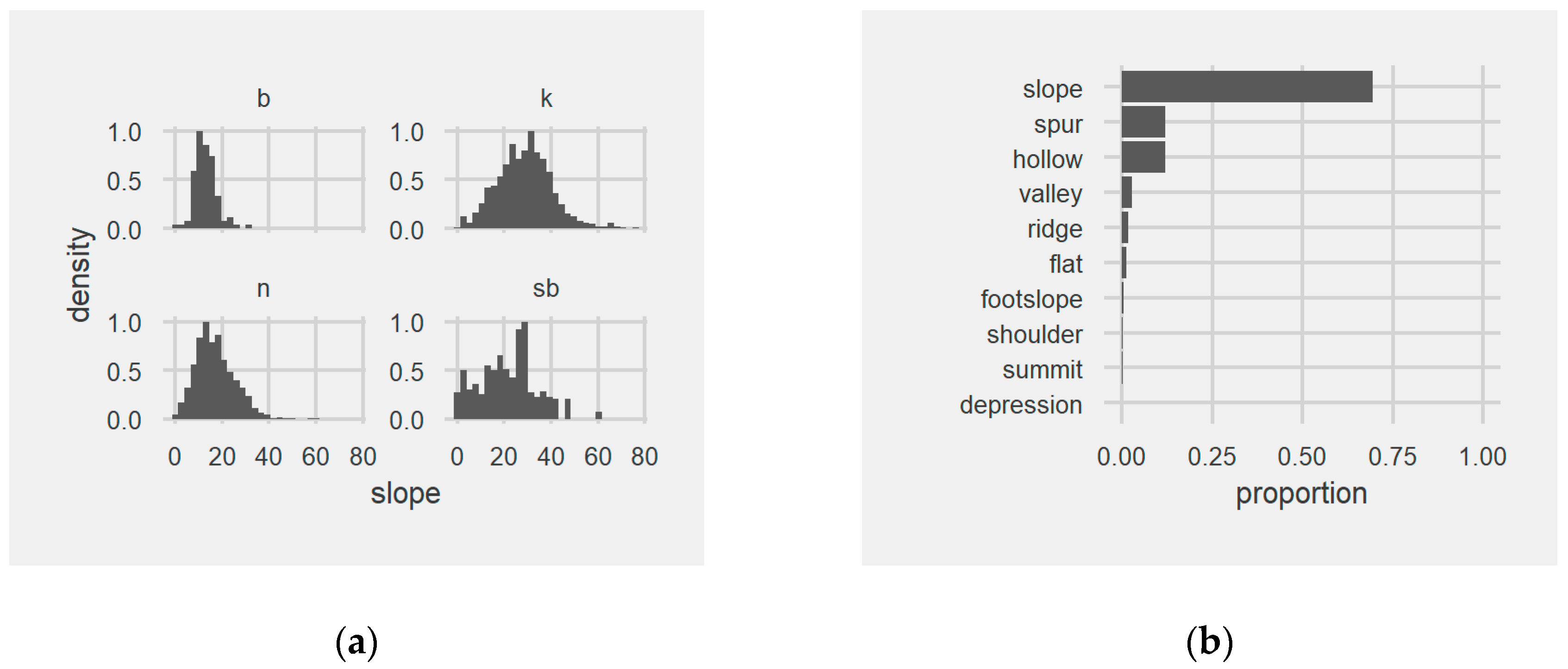
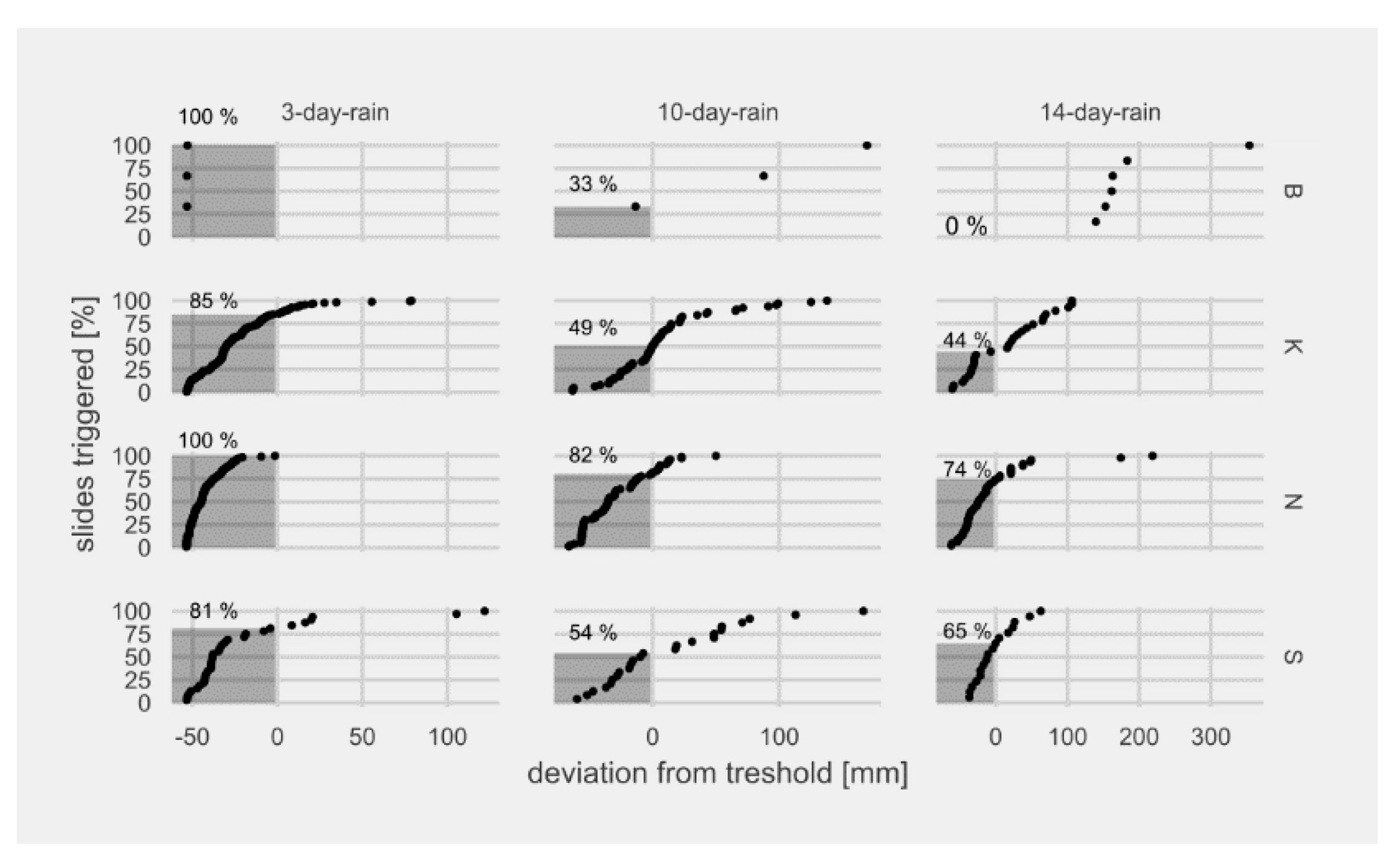
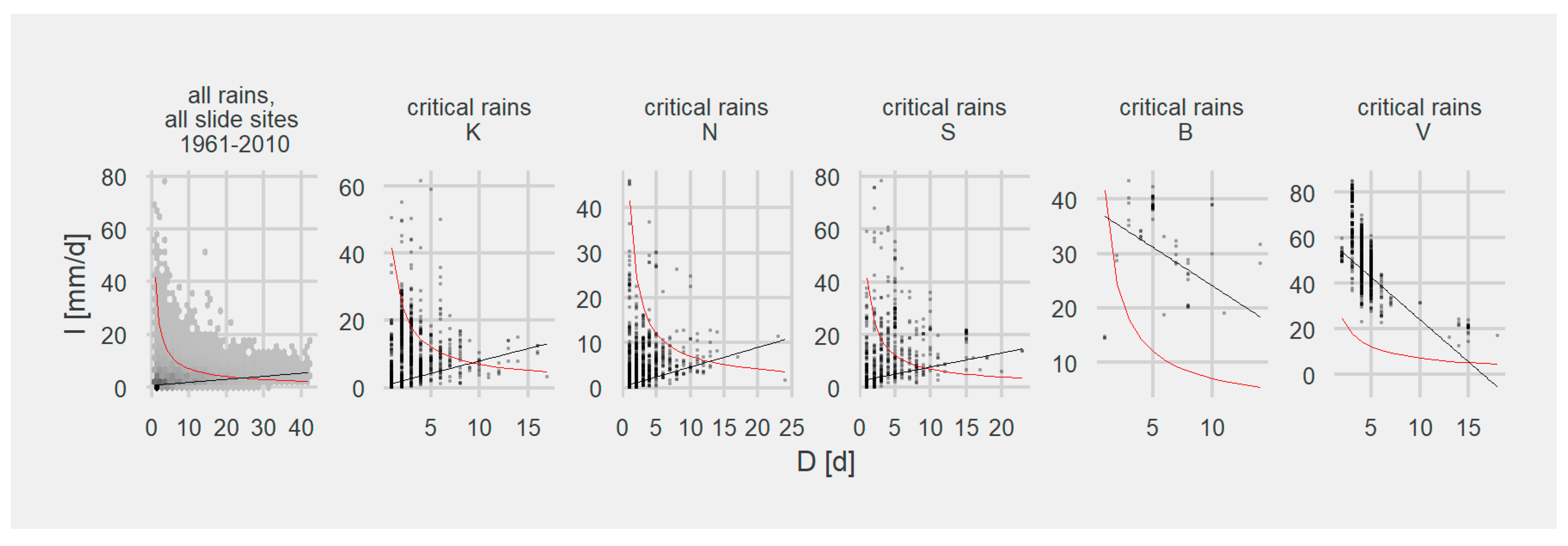

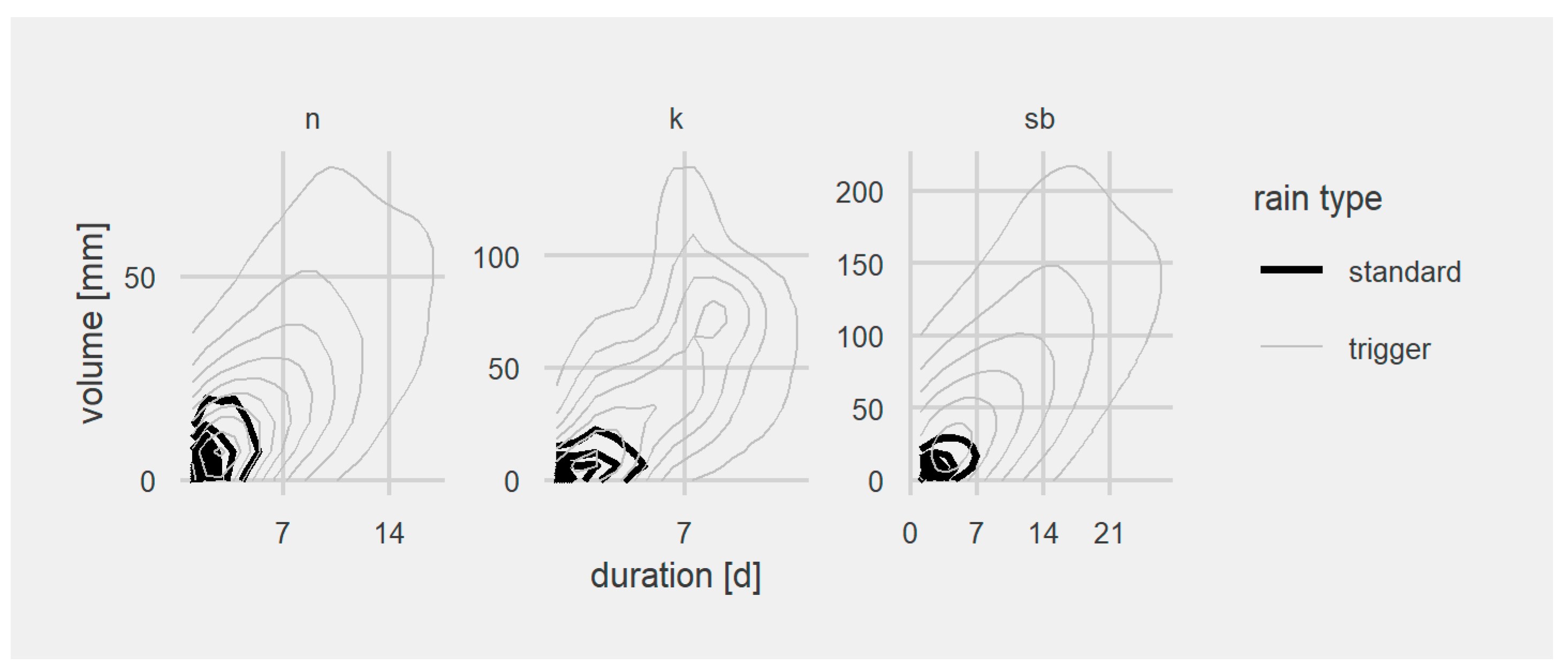
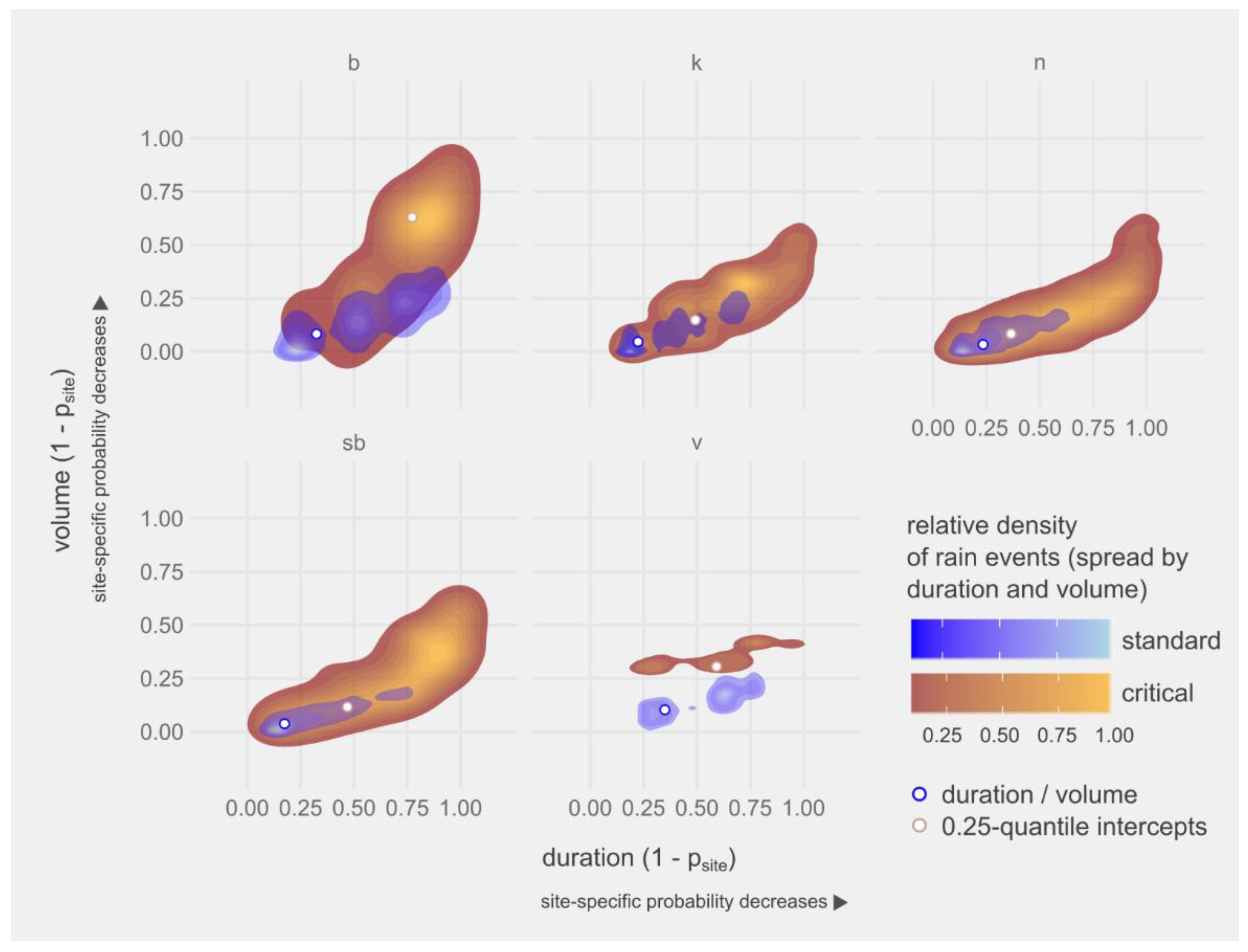

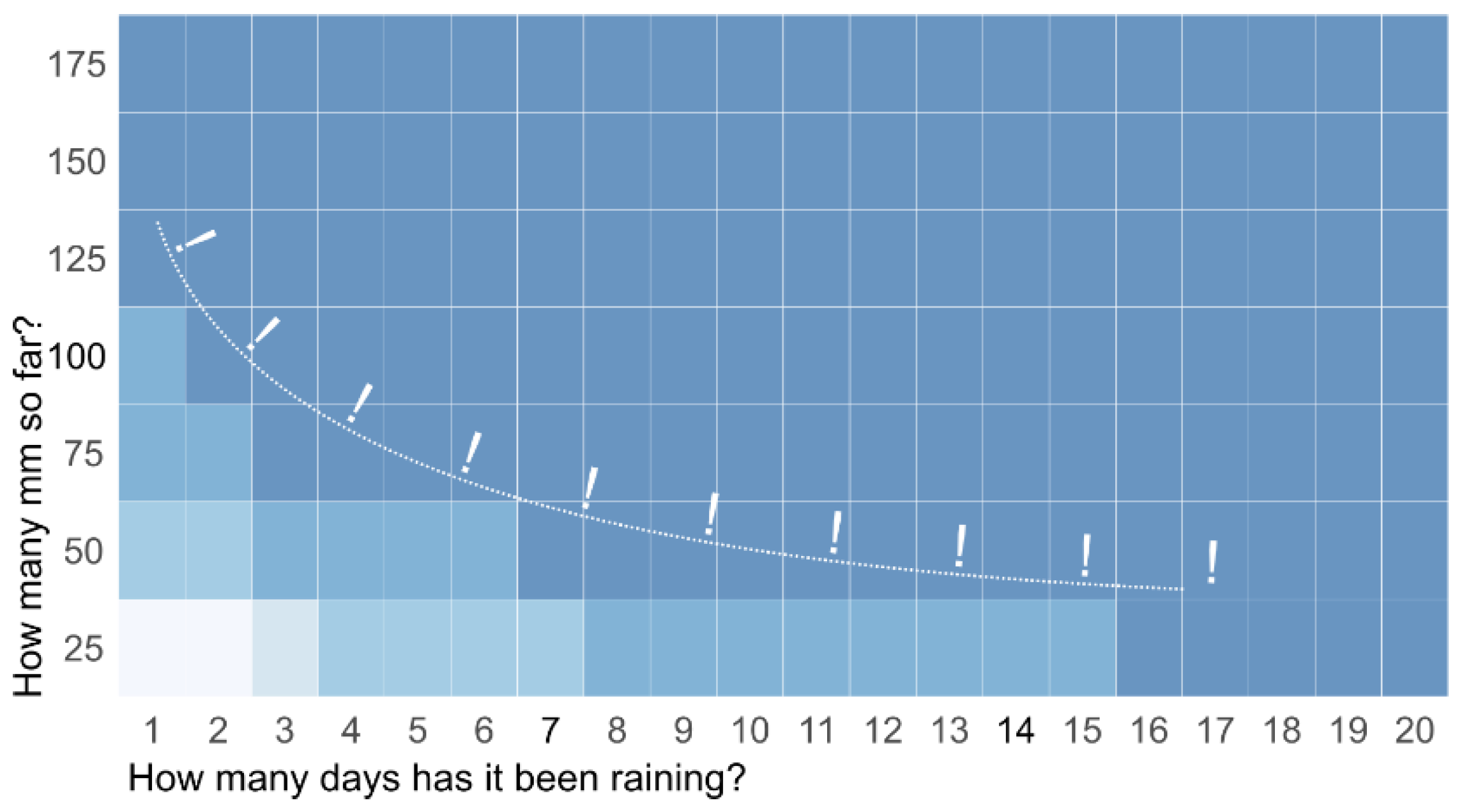
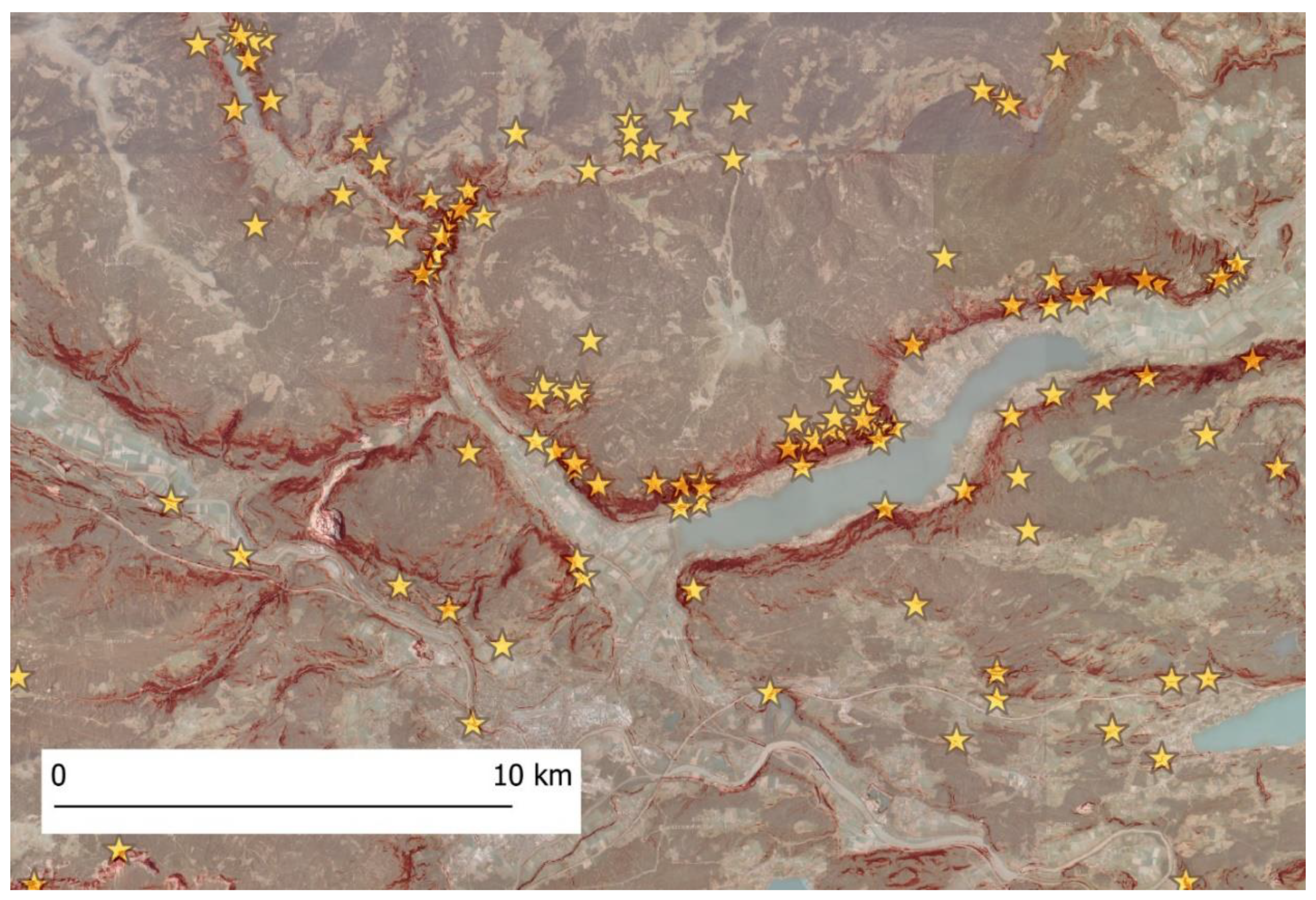
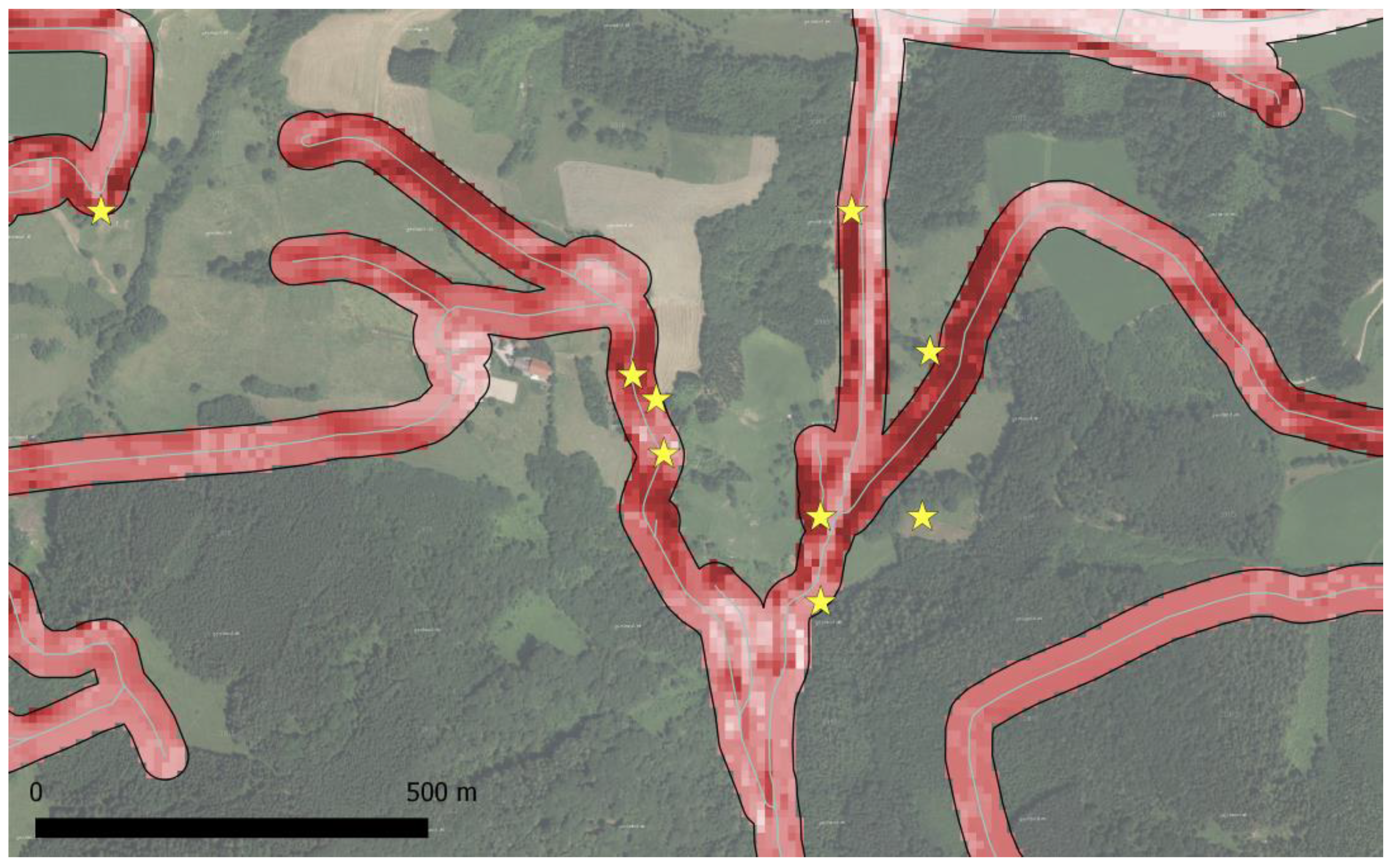
| Feature | Type | Res 1 | Source | |
|---|---|---|---|---|
| 1 | slides | point | province administrations 2 | |
| 2 | geology | polygon | GBA 3 via Geoland.at 4 | |
| 3 | elevation | raster | 10 | Geoland.at |
| 4 | slope, exposition (azimuth) | raster | 10 | derived from (1) with a 70 × 70 moving window |
| 5 | morphology | raster | 10 | derived from 1 |
| 6 | forest cover | raster | 30 | BFW 5 |
| 7 | infrastructure | vector | OpenStreetMap | |
| 8 | precipitation | raster | 1000, 1 | ZAMG 6 [35] |
| 9 | aerials of slide sites | raster | varying | Bing |
| 10 | expert risk and trend assessments | own data (survey) |
| Mean | Sd | Sd% Mean | |
|---|---|---|---|
| forest distance: slope | 0.16 | 0.021 | 13 |
| slope | 0.13 | 0.016 | 12 |
| altitude * morphology 2 | −0.07 | 0.007 | 11 |
| altitude | −0.08 | 0.011 | 15 |
| altitude * slope | −0.09 | 0.014 | 17 |
| forest distance * morphology | −0.09 | 0.014 | 15 |
© 2020 by the authors. Licensee MDPI, Basel, Switzerland. This article is an open access article distributed under the terms and conditions of the Creative Commons Attribution (CC BY) license (http://creativecommons.org/licenses/by/4.0/).
Share and Cite
Offenthaler, I.; Felderer, A.; Formayer, H.; Glas, N.; Leidinger, D.; Leopold, P.; Schmidt, A.; Lexer, M.J. Threshold or Limit? Precipitation Dependency of Austrian Landslides, an Ongoing Challenge for Hazard Mapping under Climate Change. Sustainability 2020, 12, 6182. https://doi.org/10.3390/su12156182
Offenthaler I, Felderer A, Formayer H, Glas N, Leidinger D, Leopold P, Schmidt A, Lexer MJ. Threshold or Limit? Precipitation Dependency of Austrian Landslides, an Ongoing Challenge for Hazard Mapping under Climate Change. Sustainability. 2020; 12(15):6182. https://doi.org/10.3390/su12156182
Chicago/Turabian StyleOffenthaler, Ivo, Astrid Felderer, Herbert Formayer, Natalie Glas, David Leidinger, Philip Leopold, Anna Schmidt, and Manfred J. Lexer. 2020. "Threshold or Limit? Precipitation Dependency of Austrian Landslides, an Ongoing Challenge for Hazard Mapping under Climate Change" Sustainability 12, no. 15: 6182. https://doi.org/10.3390/su12156182
APA StyleOffenthaler, I., Felderer, A., Formayer, H., Glas, N., Leidinger, D., Leopold, P., Schmidt, A., & Lexer, M. J. (2020). Threshold or Limit? Precipitation Dependency of Austrian Landslides, an Ongoing Challenge for Hazard Mapping under Climate Change. Sustainability, 12(15), 6182. https://doi.org/10.3390/su12156182





